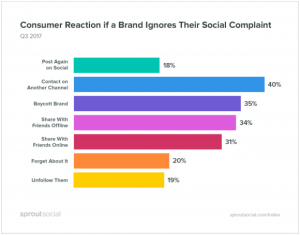In the past, funding a project was a rigid and difficult system that required you to either borrow a significant amount of money from a bank, hope to secure angel investors or commit to the tricky world of begging businesses and investors for money. While these methods are still useful in their own ways, crowdfunding took the world of innovation by storm by allowing would-be businesspeople to secure currency from an entirely different group of people.
While crowdfunding is still in its infancy, it has helped produce a number of projects. Here we will talk about how this has made a more even playing field for the “small guy” and how people with little to no experience were able to secure thousands or even millions of dollars for a product idea.
Modern Crowdfunding
Despite many small ventures here and there throughout history that involved crowdfunding, it wasn’t until 1997 that modern crowdfunding was first created. It can be traced to early social media where a large group of people helped raise over $ 60,000 to help then new UK band Marillion tour and produce their first record, a strategy they used with subsequent records to great effect.
It wasn’t until nearly a decade later when websites started popping up specifically for the purpose of creators putting their projects online and gaining money from interested customers. Starting around 2006 to now, websites such as Sellaband, Indiegogo, Kickstarter and Microventures came online and dominated the crowdfunding world.
While each website is somewhat different, they all do nearly the same thing. Businesses or individual creators can make posts where they show off their product or idea, state how much money they need and why and upload videos and images to get people excited enough to put down a small amount of money.
According to many reports, this type of investing has produced nearly $ 34 billion worth of seed capital for entrepreneurs.
Successful Funding
This isn’t going to get into whether the product itself was successful or not, but instead will showcase how a select number of ideas were able to secure massive amounts of money.
Perhaps one of the biggest success stories in crowdfunding history (and equally infamous for its subsequent drop into bankruptcy after manufacturing the product) is the Ouya. Brought forward by the president of Boxer8, a fairly unknown company at the time, she showcased the Ouya as a budget game system that would cost less than $ 100 that would play Android and proprietary games on the TV, while being completely hackable for those who wanted to improve the system on their own. This project raised about $ 8.5 million.
Another huge winner in the crowdfunding world was Mighty Number 9. Brought forward by Keiji Inafune, the creator of Megaman, he showed this as a spiritual successor to Megaman that would implement all the ideas that Capcon wouldn’t allow him to use for one reason or another. Along with stretch goals of increasing the game in terms of levels, he marketed this as a retro game that would encompass everything great about old platformers. This allowed him to raise about $ 4 million.
The last campaign that we will talk about is the Pebble Time. This is one of the biggest successes ever and the product has been very well received after its manufacture. The Pebble Time is a smartwatch that, unlike the iWatch, is able to connect to both Android and Apple devices so that you can easily see your activity from your watch. The Pebble Time raised about $ 20 million, smashing several records along the way.
Tips for Success
If you check any incredibly successful crowdfunding project, not just the three above, you’ll notice a few similar threads in their marketing. First of all, they all do a wonderful job of engaging the investor in a rational and emotional way by telling them the wonders of what they’re getting (emotion) and the practicality of the product (rational). They build a story that people relate to and that they can’t help but throw money at.
They also focus on what is in it for the investor. The most basic way of doing this promising bonuses for those who offer more money, but these projects take it a step further. For example, Ouya focused on how this game system would be a revolution for the TV, how users could finally play a whole new system that wasn’t controlled by AAA developers who had been producing shoddy and unlikable products for years. Or Mighty Number 9, which promised players a game straight from their childhood that would blow their socks off. You have to appeal to your investors and show them that your product is vastly different from anything on the market.
Lastly, don’t forget the power of authorities in the area. You can do everything in your power to show why your product is awesome, but it won’t mean anything if you can’t convince them. However, getting an authority in the niche to agree that your product is awesome can help you quickly gain thousands of dollars.
Conclusion
Crowdfunding has allowed entrepreneurs from all walks of life to step up and get the money needed to help their project along. Not only does this help level the playing field, but it helps you interact with your soon-to-be fanbase from the very beginning, which helps sales and boosts marketing. While crowdfunding can be difficult due to the vast number of people trying it, you’ll find that a good campaign can raise a tremendous amount of money in no time.
Business & Finance Articles on Business 2 Community(68)




